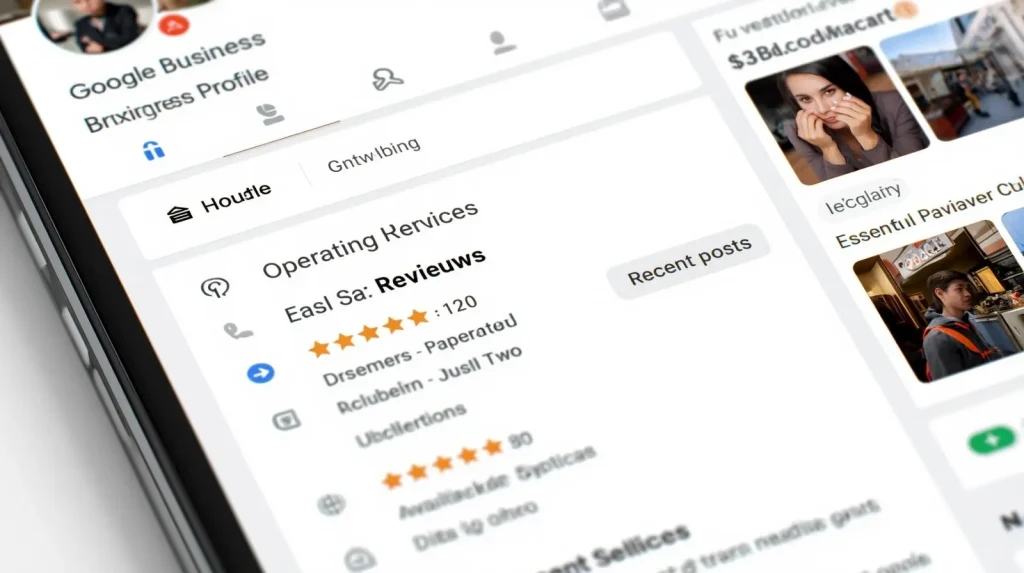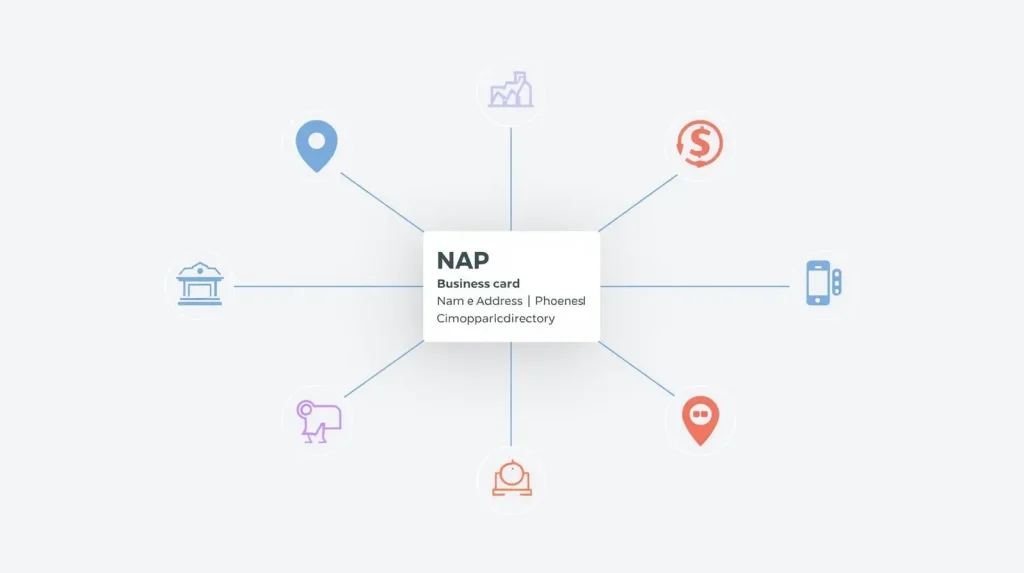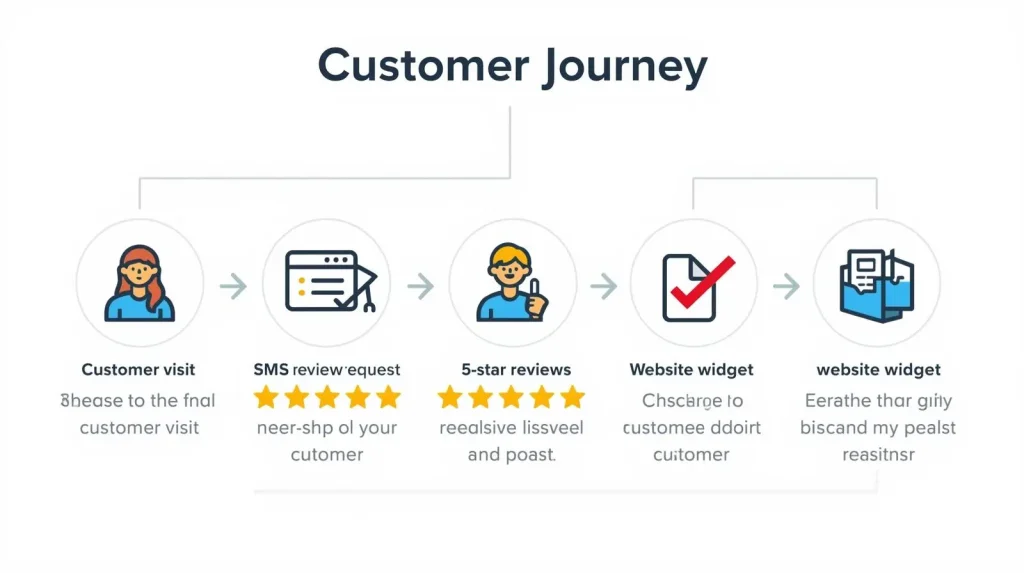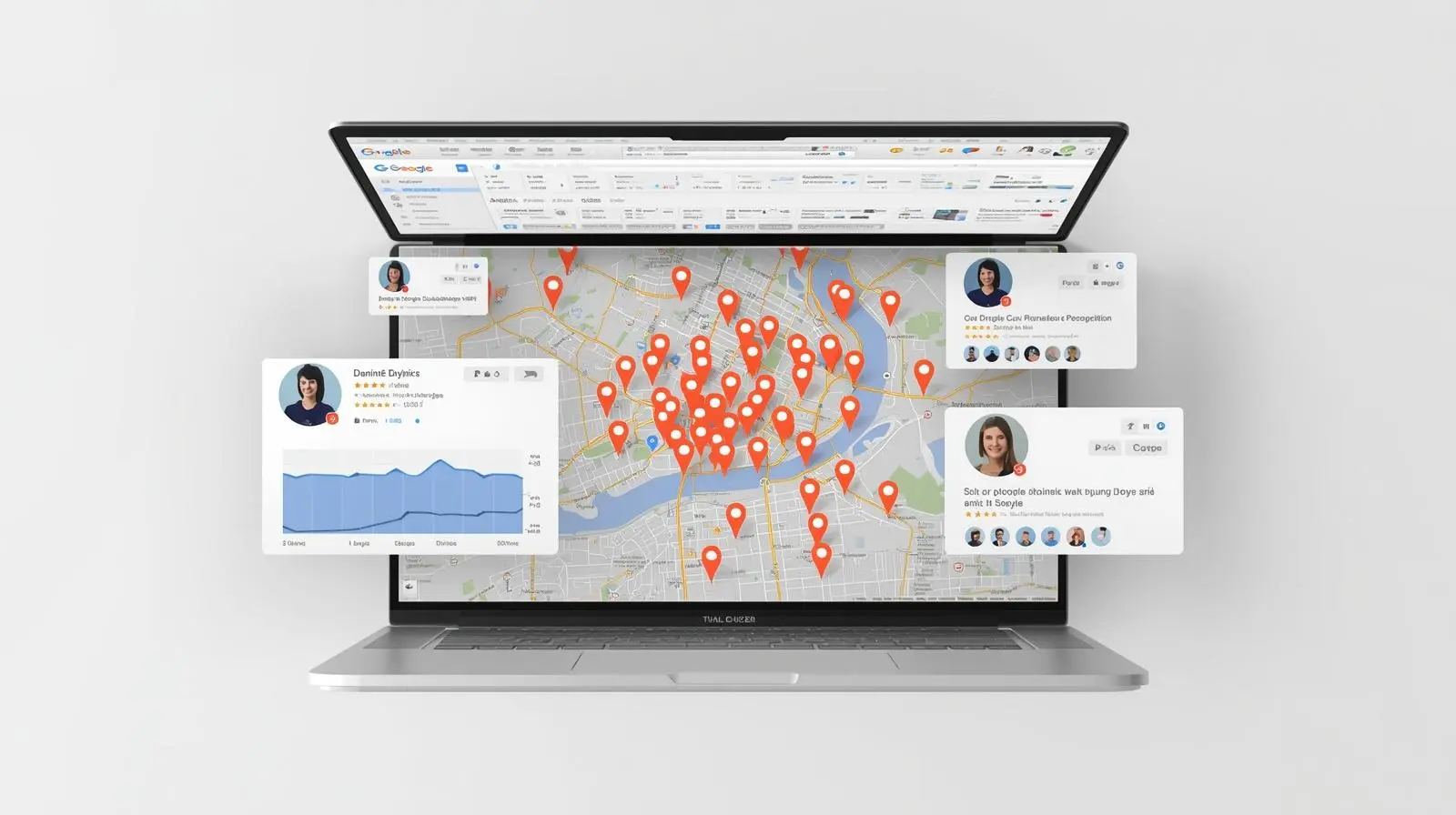Local SEO tools for small businesses are essential in today’s competitive market because they help companies increase visibility in their geographic area, attract nearby customers, and optimize online presence without spending a fortune on advertising. By leveraging tools that track local keyword rankings, manage Google Business Profiles, monitor reviews, and analyze competitor strategies, small business owners can make informed decisions to improve search rankings. These tools also automate routine tasks such as citation management, review requests, and performance reporting, saving time while boosting credibility and trust. Local SEO tools empower small businesses to compete with larger brands in their neighborhood effectively.
If you run a café, dental clinic, auto repair shop, salon, or home service, you don’t need a massive marketing budget to show up in local search—you need the right tools and a lean workflow. In 2025, local SEO is less about tricks and more about consistency, accuracy, reviews, and real-world signals that tell search engines, “We’re the best answer nearby.”
This guide breaks down the best local SEO tools for small businesses, what they actually do, how to build a budget-friendly stack, and the exact weekly checklist that turns tools into traffic and revenue.
Local SEO Tools for Small Businesses
-
Local SEO Tools for Small Businesses help improve online visibility and drive more local customers.
-
Google Business Profile (GBP) – Manage listings, posts, and track reviews to appear in local searches.
-
SuperLocalFans – Automate review requests, monitor reputation, and gain actionable insights.
-
Moz Local – Sync your business info across directories and check NAP consistency.
-
BrightLocal – Track rankings, audit local SEO, and monitor competitors.
-
Whitespark – Identify citation opportunities and manage local listings efficiently.
-
SEMrush / Ahrefs – Research local keywords, analyze backlinks, and track competitor strategies.
-
Yext – Centralize listings and maintain accurate business info online.
Why Local SEO Is Different (and Why Tools Matter)
Local SEO is unique because it connects your business’s online presence directly with its physical location. Unlike traditional SEO, which focuses on national or global visibility, local SEO ensures your business appears in front of people actively searching for products or services near them. Key factors include:
-
Accurate Business Data (NAP): Name, Address, Phone number, business hours, and categories are critical for search engines.
-
Proximity & Relevance: Your location and how well your offerings match searcher intent affect rankings.
-
Prominence & Reputation: Google evaluates reviews, ratings, photos, responses, and local mentions to gauge credibility.
-
Website Quality: Page speed, informative content, schema markup, internal linking, and service pages contribute to visibility.
-
Engagement Metrics: Click-throughs, calls, directions, messages, and bookings signal value to Google.
For small businesses, handling all these factors manually can be overwhelming. Local SEO tools help by:
-
Automating business listings updates across platforms.
-
Monitoring and managing customer reviews in real-time.
-
Handling citations and ensuring consistent business data.
-
Publishing Google Business Profile posts without manual effort.
-
Generating reports and actionable insights to track growth.
Using the right local SEO tools saves time, ensures accuracy, and allows you to focus on providing excellent customer experiences while boosting your local search visibility.
Learn more about how local SEO tools can grow your business at SuperLocalFans Blog.
What Makes a Tool Stack “Small-Business Friendly”?
A small-business-friendly tool stack is designed to empower entrepreneurs with limited resources to effectively manage their digital presence and marketing efforts. Key characteristics include:
-
Clear ROI: Tools should enable businesses to directly link actions—such as customer calls, messages, bookings, or foot traffic—to specific marketing activities, demonstrating tangible returns on investment.
-
Simplicity: An intuitive interface allows users to manage essential tasks like Google Business Profile (GBP) updates, reviews, and listings from a single dashboard, minimizing the learning curve.
-
Automation: Automated features for collecting reviews, syncing listings, scheduling posts, and tracking rankings save time and reduce manual workload.
-
Scalability: The tool stack should accommodate business growth, seamlessly supporting additional locations or expanded services without requiring a complete system overhaul.
-
Price-to-Value: Affordable pricing structures ensure that small businesses can access necessary features without exceeding budget constraints.
Utilizing tools that embody these characteristics allows small businesses to enhance their online visibility, engage with customers effectively, and streamline operations, all while maintaining cost-efficiency.
For more insights on selecting the right tools for your small business, visit SuperLocalFans Blog.
The Local SEO Tool Categories (and What to Use Them For)
Below are the core tool types you’ll likely need. You can mix and match depending on budget and team size.
1) Google Business Profile (GBP) Management

Purpose: Manage your listing, categories, services, posts, Q&A, photos, messaging, and hours.
Why it matters: GBP is the front door for maps rankings, calls, and directions.
Look for tools that:
-
Audit categories & services
-
Schedule posts & offers
-
Track calls, direction clicks, messages
-
Flag duplicate or suspended listings
2) Listings & Citations
Purpose: Keep your NAP data correct across directories (maps, apps, GPS).
Why it matters: Consistency reduces confusion; it supports local trust signals.
Look for tools that:
-
Push updates to major directories
-
Auto-fix duplicates
-
Provide coverage reports & change logs
3) Review & Reputation Management
Purpose: Automate feedback requests and reply to reviews quickly.
Why it matters: Reviews drive rankings and conversions—customers read them.
Look for tools that:
-
Send SMS/email review asks at the right time
-
Funnel unhappy responses privately
-
Provide AI-assisted reply suggestions
-
Showcase reviews on your site (widgets, schema)
4) Rank Tracking (Local Pack + Organic)
Purpose: Track keyword visibility in specific geolocations (postcode, radius, grid).
Why it matters: Local results change by street; you need location-aware tracking.
Look for tools that:
-
Track “near me” & service + city terms
-
Measure map pack & organic separately
-
Provide shareable, client-friendly reports
5) Website & Technical (Speed, Schema, On-Page)
Purpose: Deliver a fast, structured site that explains your services clearly.
Why it matters: Local intent still hits your website—speed + clarity win.
Look for tools that:
-
Diagnose speed (Core Web Vitals)
-
Add localBusiness schema
-
Audit titles, meta, headings, internal links
6) Keyword & Content Research (Local Intent)
Purpose: Build pages around service + location phrases, FAQs, and problems customers actually search for.
Look for tools that:
-
Show local search volume & difficulty
-
Surface People-Also-Ask questions
-
Suggest content gaps vs. competitors
7) Call Tracking & Conversation Intelligence
Purpose: Connect clicks to calls and attribute revenue to keywords, GBP, and pages.
Why it matters: Without this, you’re guessing.
Look for tools that:
-
Provide dynamic number insertion (DNI)
-
Record & transcribe calls (with consent)
-
Show source → keyword → call outcomes
8) Social & UGC Support
Purpose: Keep fresh photos, short videos, and testimonials flowing—on GBP and socials.
Why it matters: Authentic user-generated content boosts trust and engagement.
Look for tools that:
-
Schedule posts to GBP + social
-
Collect and display testimonials
-
Handle usage rights for UGC
The 2025 “Small Business” Local SEO Stack (Starter → Pro)
Starter Stack (Solo Owner or 1 Location)
-
GBP: Native GBP dashboard (posts, photos, Q&A weekly)
-
Reviews: Simple SMS/email ask via your POS/CRM or a lightweight reputation tool
-
Tracking: Free analytics + call tracking number for the site & GBP
-
Website: Speed plugin, image compression, localBusiness schema
-
Keywords: Use free/affordable keyword tools, Google autocomplete, and People-Also-Ask
-
Rank Tracking: One local geo grid or ZIP/radius tracker for 10–30 keywords
Outcome: Tight control of your listing + basic review engine + visibility tracking.
Growth Stack (2–5 Locations or Aggressive Goals)
-
Listings/Citations: Automated sync to major directories, duplicate suppression
-
Reputation: Automated review requests by event (purchase/visit/job done)
-
GBP Management: Scheduled posts; product/service sync; UTM-tagged links
-
Rank Tracking: Grid-based map tracking for priority keywords
-
Content: Service-area pages with location modifiers + FAQs + testimonials
-
Call Tracking: Dynamic number insertion on site; record + tag calls for training
Outcome: Consistent data everywhere + real signals (reviews, photos) + measurable ROI.
Pro Stack (Multi-Location or Competitive Markets)
-
All of the above, plus:
-
Advanced Analytics: Connect GBP, GSC, call tracking, and CRM for revenue attribution
-
Local Link Building Software: Track citations + local news/PR mentions
-
AI Workflows: Draft review replies, summarize calls, generate GBP posts (human-edited)
-
Reputation Widgets: Stream fresh reviews to key landing pages (with schema)
-
Location Pages at Scale: Templated but unique; service + city combos; structured data
Outcome: You own the category locally—visibility, volume, and conversions all up.

How to Choose Your Tools (Decision Filters)
Selecting the right tools for your small business is crucial to ensure efficiency, effectiveness, and growth. Here are key considerations to guide your decision:
-
Goal Alignment: Identify the primary objectives you aim to achieve—be it increasing calls, bookings, or foot traffic. Choose tools that provide measurable outcomes aligned with these goals.
-
User Experience: Opt for tools with intuitive interfaces that your team can easily adopt. A user-friendly experience ensures better utilization and minimizes training time.
-
Comprehensive Coverage: Ensure the tools support your specific country, directories, and languages to cater to your target audience effectively.
-
Data Ownership: Select tools that allow you to export data, ensuring you retain control over your reviews, contacts, and reports for future analysis.
-
Support and Scalability: Choose tools that offer robust customer support and can scale with your business growth, adapting to evolving needs.
For more insights on selecting the right tools for your small business, consider exploring resources from reputable platforms like Forbes and HubSpot.
By carefully evaluating tools based on these criteria, you can make informed decisions that drive your business towards its objectives.
Weekly Local SEO Workflow (90 Minutes)
Monday (25 min)
-
Check GBP insights: calls, direction requests, top queries.
-
Post one GBP update (offer/photo/event).
-
Reply to new reviews (24–48h max).
Wednesday (30 min)
-
Add 3–5 customer photos or short clips (with consent).
-
Publish one FAQ or a mini blog update (“How much does X cost in [area]?”).
-
Check rank tracker for movement by geolocation.
Friday (35 min)
-
Run listings health scan and fix any mismatches.
-
Send automated review requests from the week’s customers.
-
Review call tracking: tag qualified calls; note missed calls and callback times.
This cadence builds freshness signals, review velocity, and data accuracy—the big three of local.
Content That Wins in Local (Easy Wins)
-
Service + City Pages: Create pages targeting specific services and locations, e.g., “Emergency Plumber in [Town]—24/7,” to capture local search traffic.
-
Comparison & Price Explainers: Offer clear cost breakdowns for your services with titles like “How much does [service] cost in [area]?” to help potential customers make informed decisions.
-
Before/After Galleries & Case Studies: Showcase real projects with images and descriptions highlighting results, demonstrating your expertise and building trust with local audiences.
-
FAQ Hubs: Develop dedicated sections answering practical questions customers often ask before contacting your business, like service duration, pricing, or warranty info.
-
User-Generated Content (UGC) / Testimonials: Encourage satisfied clients to share reviews, photos, or short videos. With permission, display these as social proof across your website and social channels.
-
Short Videos / Reels: Produce 15–30 second clips demonstrating how-to tips, behind-the-scenes work, staff introductions, or gear/tool checks to engage audiences quickly and locally.
-
Local News & Updates: Post content about nearby events, road closures, or community initiatives relevant to your business to stay top-of-mind for local customers.
-
Promotions & Seasonal Offers: Highlight limited-time deals tailored to your location, such as “Back-to-school car maintenance special in [City],” to drive immediate engagement.
-
Blog Articles Targeting Neighborhoods: Write articles like “Top 5 Landscaping Services Near [Neighborhood]” to increase relevance in local search results.
-
Interactive Content: Quizzes, surveys, or calculators (e.g., cost estimators for services) make your site more engaging and keep visitors on the page longer.
-
Maps & Directions Integration: Embed Google Maps showing your service coverage to improve local SEO and user experience.
-
Consistent NAP: Include your business name, address, and phone consistently on every page to reinforce credibility and local search signals.
This approach ensures your content is structured, SEO-friendly, and tailored to capture local customers effectively.
If you want, I can also create a visual Canva-ready prompt for this bullet-style guide for your blog or social media. Do you want me to do that?
Measurement & ROI (What to Track)
-
Calls by Source – Track how many calls come from Google Business Profile (GBP), organic search, paid ads, and social media campaigns to understand channel performance.
-
Qualified Calls – Differentiate between general inquiries and actionable leads (bookings, quotes, sales) to focus on revenue-driving interactions.
-
Direction Requests & Website Clicks from GBP – Monitor how many users request directions or click through your profile to visit your location or learn more online.
-
Review Volume, Average Rating & Reply Rate – Track review activity to manage reputation, improve trust, and boost local SEO performance.
-
Keyword Visibility by Grid – Measure rankings in the map pack versus organic results to optimize local search targeting.
-
Page Conversions – Track form submissions, live chat interactions, or online bookings to evaluate how effectively your website converts visitors into customers.
-
Cost per Lead (if running ads) – Compare paid campaigns against organic performance to assess efficiency and ROI.
-
Monthly Revenue Correlation – Tie calls, clicks, reviews, and conversions to actual sales for a clear view of local SEO impact.
-
Simple Spreadsheet or Dashboard – Maintain an updated tracking system to visualize trends, identify areas for improvement, and make data-driven decisions.
-
Continuous Optimization – Use insights from metrics to refine campaigns, improve service pages, and adjust local SEO strategies.

By monitoring these metrics consistently, small businesses can:
-
Prove the value of local SEO and marketing initiatives.
-
Identify high-performing channels and opportunities for improvement.
-
Optimize budgets for ads and digital tools based on performance.
-
Enhance customer experience through faster responses and better content.
Tracking these key indicators ensures measurable growth, better local visibility, and improved ROI for small businesses focusing on local search.
Troubleshooting: Why Aren’t We Ranking Yet?
If your local business isn’t ranking despite efforts, it’s usually due to fundamental SEO issues rather than missing tools. Focus on the basics first. Common problems include:
-
Category Mismatch – Your Google Business Profile (GBP) might have the wrong primary category, making it harder for search engines to match your business to relevant searches. Ensure your category reflects your core service.
-
Thin Content – One or two generic pages won’t suffice. Build a comprehensive service hub with dedicated location pages that target long-tail keywords relevant to your local audience.
-
NAP Inconsistencies – Name, Address, Phone (NAP) inconsistencies across directories confuse search engines and reduce trust. Audit and update all listings for uniformity.
-
Review Gap – Competitors consistently gain reviews while your business lags behind. Automated or manual review collection can bridge this gap and improve credibility.
-
Weak On-Page SEO – Missing city/service in titles or H1 tags, lack of internal linking, and absence of structured data (schema) hurt local rankings. Optimize each page to signal relevance clearly.
-
No Engagement Signals – Low click-through rate (CTR) from search results, short time on site, and slow mobile performance indicate poor user experience. Improve page speed, mobile responsiveness, and content quality.
Fixing these foundational issues often yields faster, more sustainable ranking improvements than buying new SEO tools.
For SMBs looking for actionable guidance on optimizing local presence, check out our comprehensive Local SEO insights blog for step-by-step strategies, recommended tools, and success examples.
Prioritize these basics consistently, monitor your progress, and combine with review management and content creation to see measurable improvements in your local search rankings.
2025 Trends Affecting Local SMBs
Local small and medium-sized businesses (SMBs) must adapt quickly to remain competitive in 2025. Emerging trends are shaping how customers discover, interact with, and trust local brands. Key trends include:
-
AI-Assisted Review Replies – Automation helps maintain a consistent review response cadence, while human editing ensures tone stays authentic. This keeps engagement high and signals activity to Google.
-
Zero-Click Search Growth – More users complete actions directly on Google Business Profiles (GBP) without visiting your website, such as viewing menus, booking appointments, or checking photos. SMBs must optimize GBP content to capture these interactions.
-
Short-Form Video on GBP & Socials – 15–30 second videos on GBP posts, Instagram Reels, and TikTok provide visual proof of your products, services, and customer experience, increasing local discovery and engagement.
-
First-Party Data Collection – Building your own email and SMS lists allows for direct communication, promotions, and review requests without relying on third-party platforms. This is critical for customer retention and long-term marketing ROI.
-
Conversation Intelligence – Leveraging AI to analyze phone calls can reveal customer sentiment, frequently asked questions, and improvement opportunities. These insights help optimize service delivery, train staff, and create content that resonates with your local audience.
![]()
Integrating these trends into daily operations ensures your SMB stays competitive, visible, and customer-centric. For a detailed guide on using reviews, content, and AI to scale your local business, visit our Local SMB Insights Blog for actionable strategies and case studies.
By prioritizing AI-assisted engagement, zero-click optimization, short-form video, first-party data, and conversation intelligence, SMBs can future-proof their marketing strategy while building trust, increasing visibility, and improving conversions in their local markets.
FAQs
Q1: Do I need expensive tools to start?
No. A lean starter stack (GBP + reviews + basic tracking) is enough to move the needle.
Q2: How long until I see results?
For an active business, 4–12 weeks for noticeable map movement—faster with consistent reviews, posts, and correct categories.
Q3: What’s the #1 tool if I can only choose one?
Your Google Business Profile (properly optimized and updated) plus systematic reviews.
Q4: Should I track keywords city-wide or by postcode?
Both if possible—but grid tracking by postcode or 1–5 km radius shows reality on the ground.
Q5: Are citations still important?
Yes—mainly for accuracy and cleanup. Set it, audit quarterly, and focus on reviews + content.
Conclusion
Local SEO isn’t won by hacks—it’s earned through consistent signals that prove your business is the best local answer. The right tool stack turns that consistency into a repeatable system: optimize your Google Business Profile, keep listings accurate, automate review requests, track rankings by location, publish helpful service-and-city content, and connect every click to real outcomes with call tracking. Start lean, then scale. A simple weekly cadence—posting on GBP, replying to reviews, adding fresh photos or FAQs, checking geo-grid rankings, and auditing citations—builds the momentum that maps and customers reward. Measure what matters: qualified calls, direction requests, bookings, and review velocity. If results stall, revisit the fundamentals—categories, on-page relevance, internal links, and page speed. In 2025, AI can speed drafting and analysis, but human judgment still sets brand tone and service quality. Make your tools the engine and your consistency the fuel. This week, choose a starter stack, switch on automated reviews, and set up location-aware rank tracking; next week, expand with content and attribution. Do this reliably, and you’ll see stronger visibility, more trust, and steady growth—without bloated budgets or guesswork.
